D.C. Circuit Review – Reviewed: 73 Years of APA Evolution (In One Chart)
This will be a quick post; I’m traveling and the wifi on my plane is about to end.
Today I participated in a Summit on Modernizing the Administrative Procedure Act at the U.S. Department of Justice. I spoke on a panel about Lessons from the Life of Administrative Law. As I prepared to speak, I thought about how much has changed since the APA was enacted in 1946. So I decided to put together a chart:
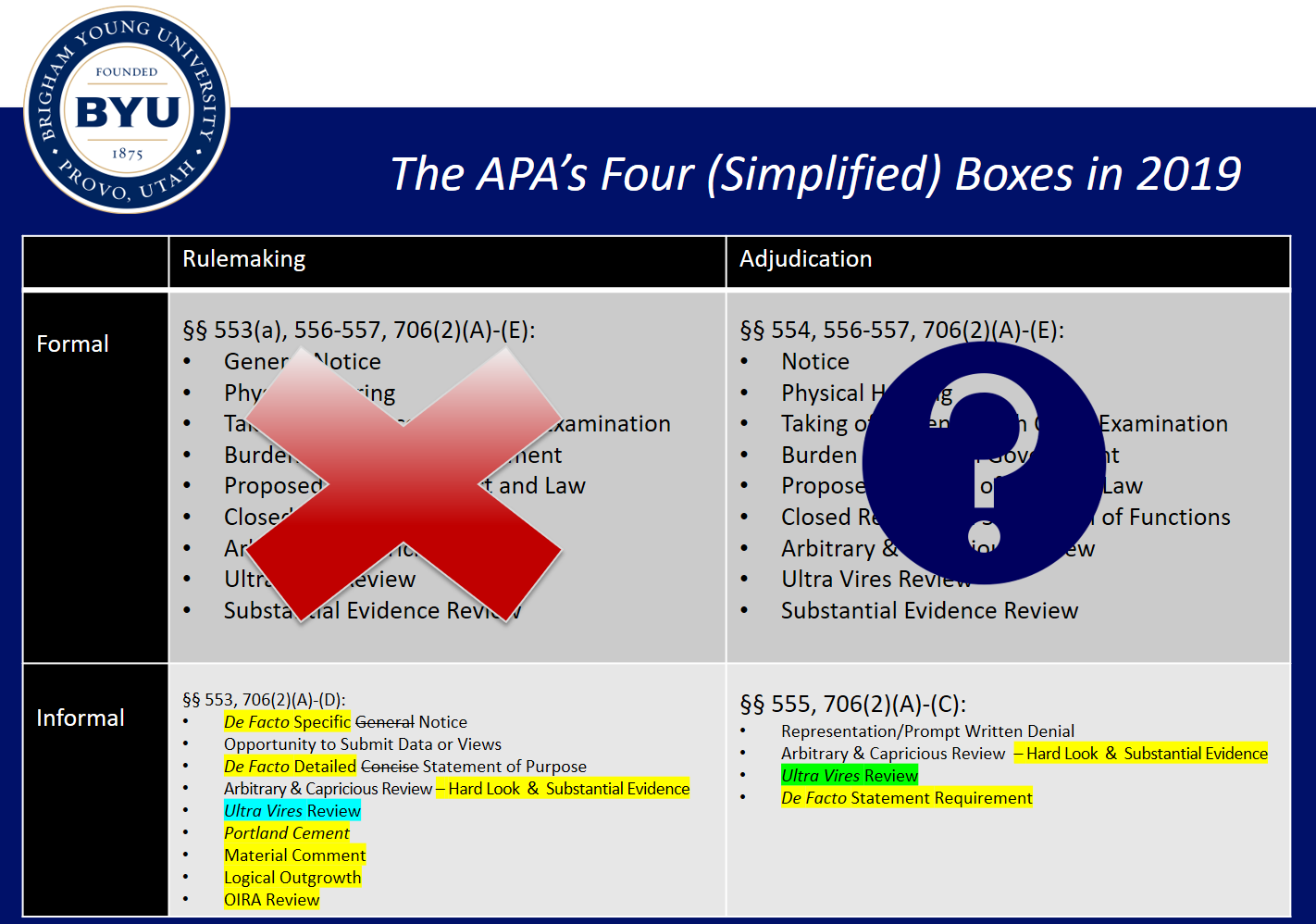
Makes sense? Hmmm. Okay. Maybe it will take more than one chart. Let me explain.
At least for agency action with legal effect,* the APA generally divides the world into four boxes: formal rulemaking, formal adjudication, informal rulemaking, and informal adjudication. When you think about administrative law, it is essential to know which box you’re in because the box carries with it the procedures that will apply. So if you know your box, you also know where to look in the APA.
Well, the 1946 boxes looked like this:
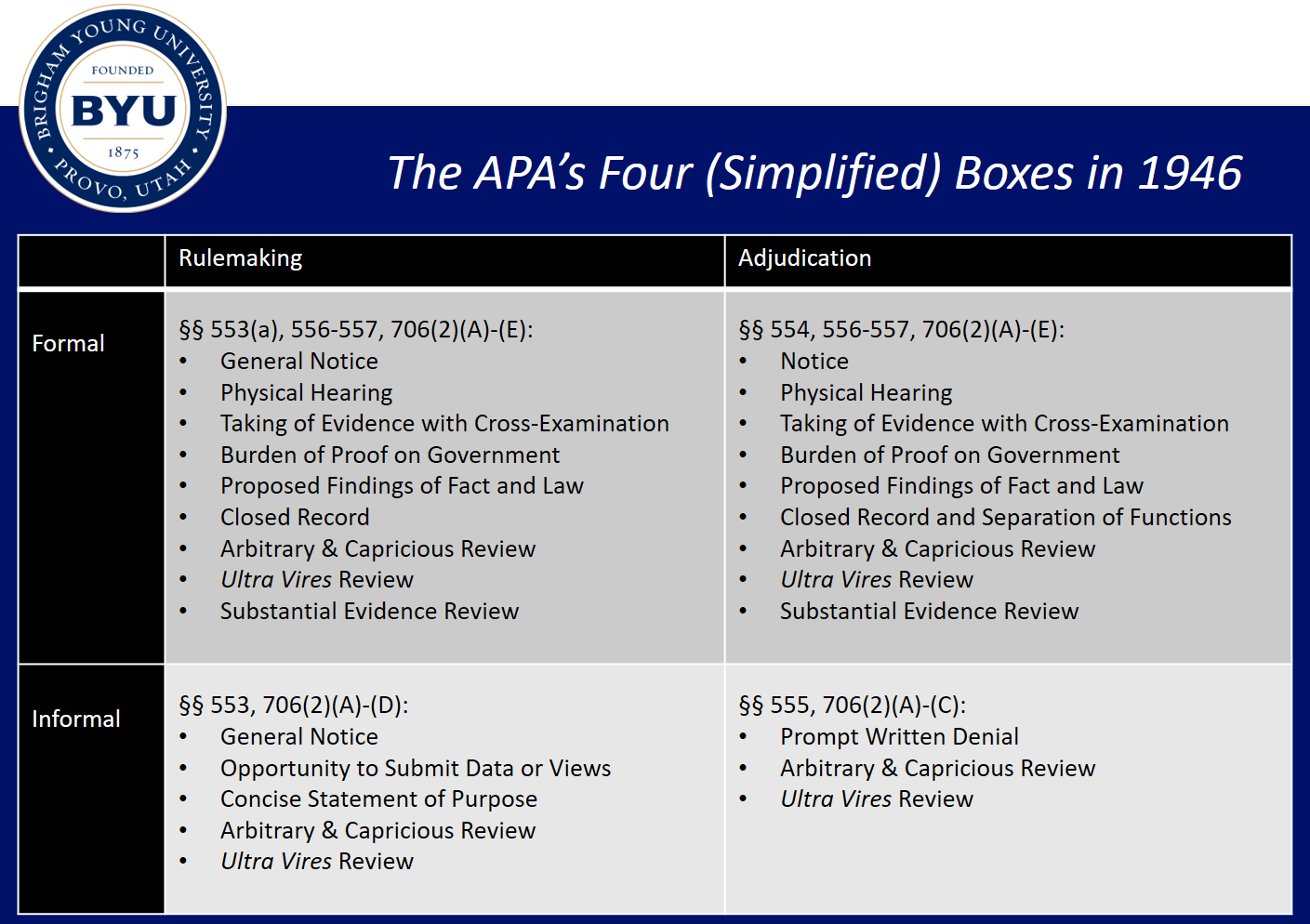
The overlapping procedures for formal rulemaking and formal adjudication were pretty darn formal. And reading the APA’s provisions for informal rulemaking and informal adjudication, one would be excused for thinking they were pretty minimal.
Each of these boxes, however, has changed. First, formal rulemaking — “the Yeti of administrative law” — is essentially dead:
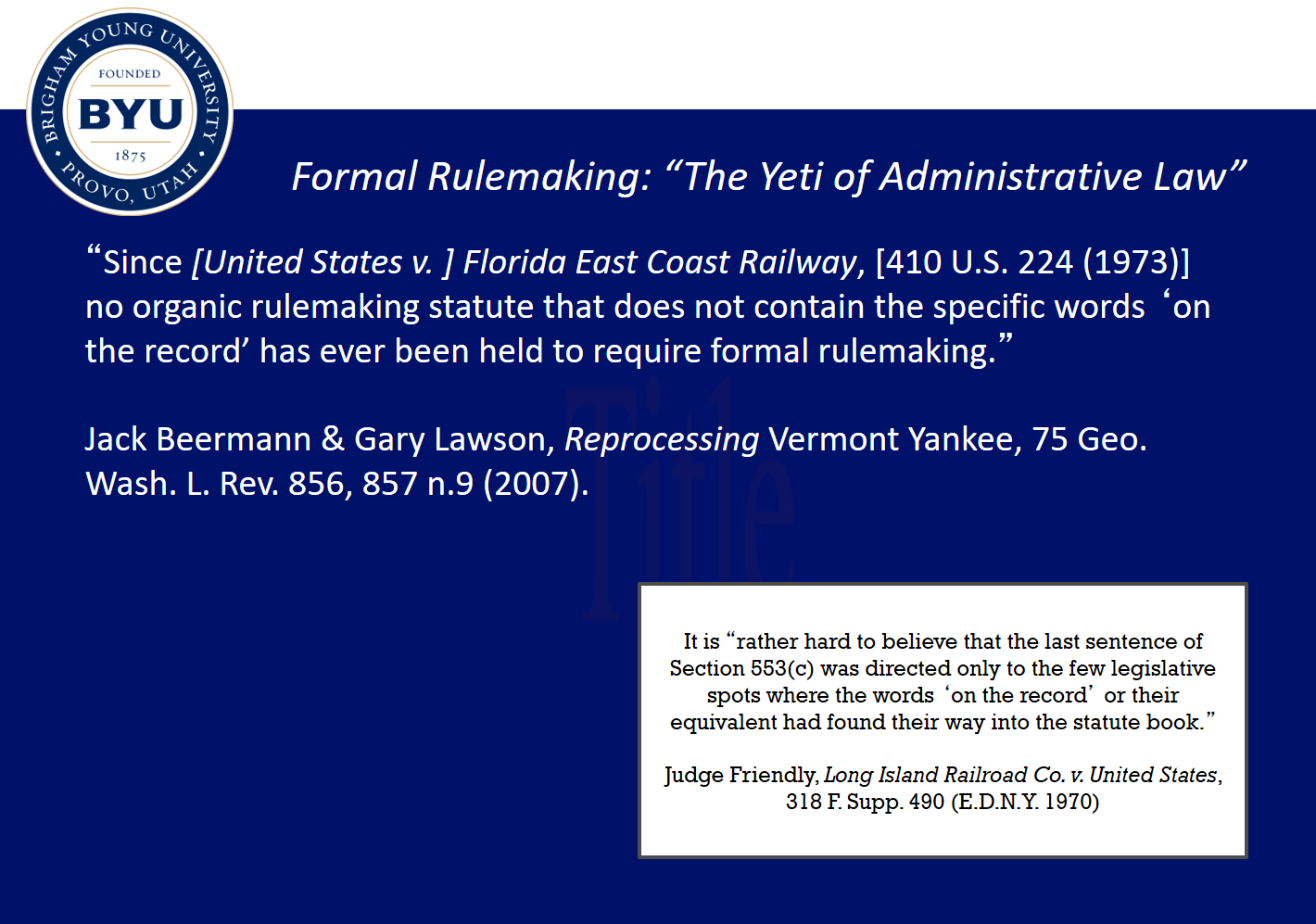
Second, formal adjudication is not dead, but it is in retreat: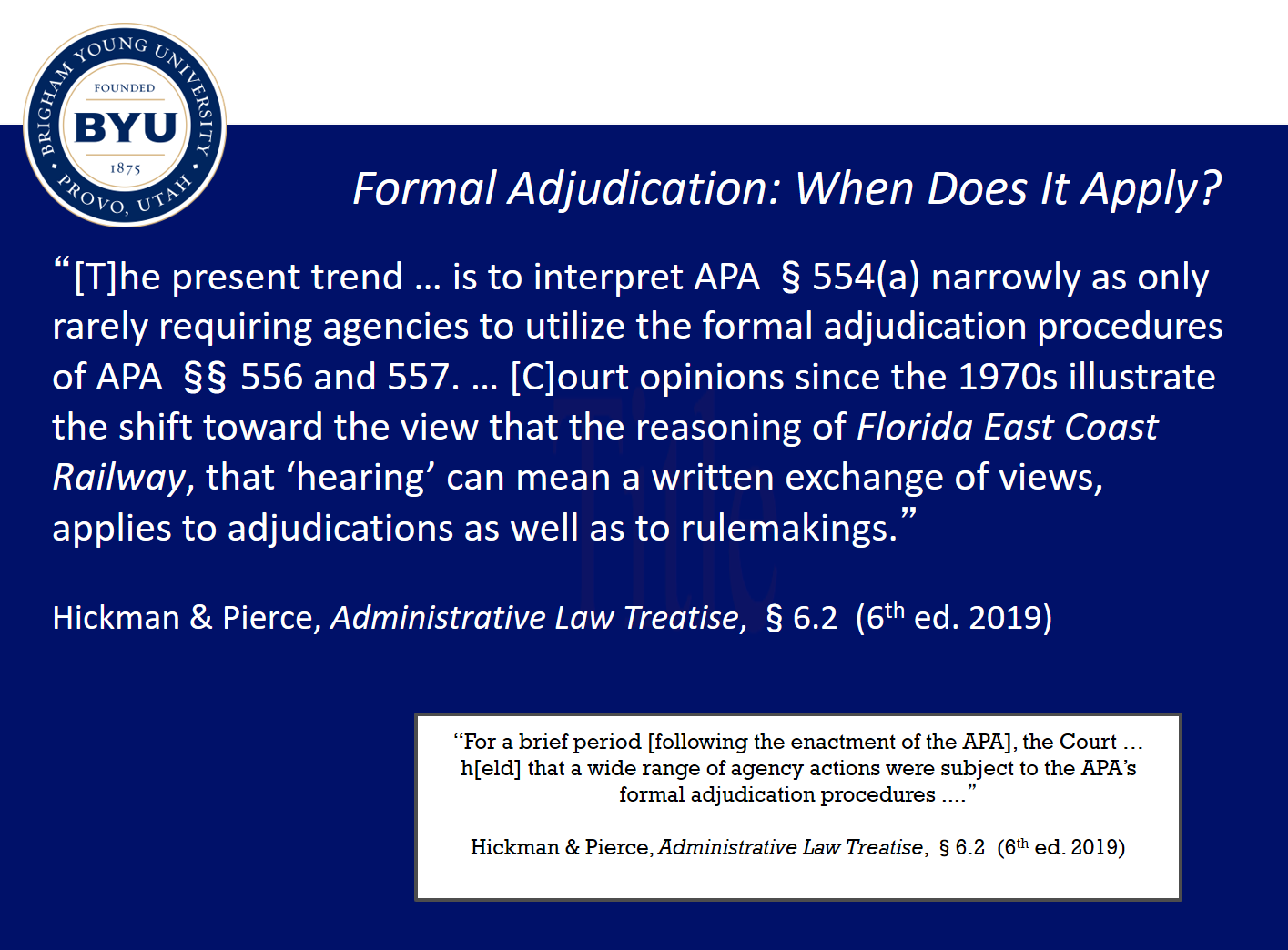
At the same time, the informal procedures have become more formal. Consider informal rulemaking. Look at Section 553 and then think about how things work today.
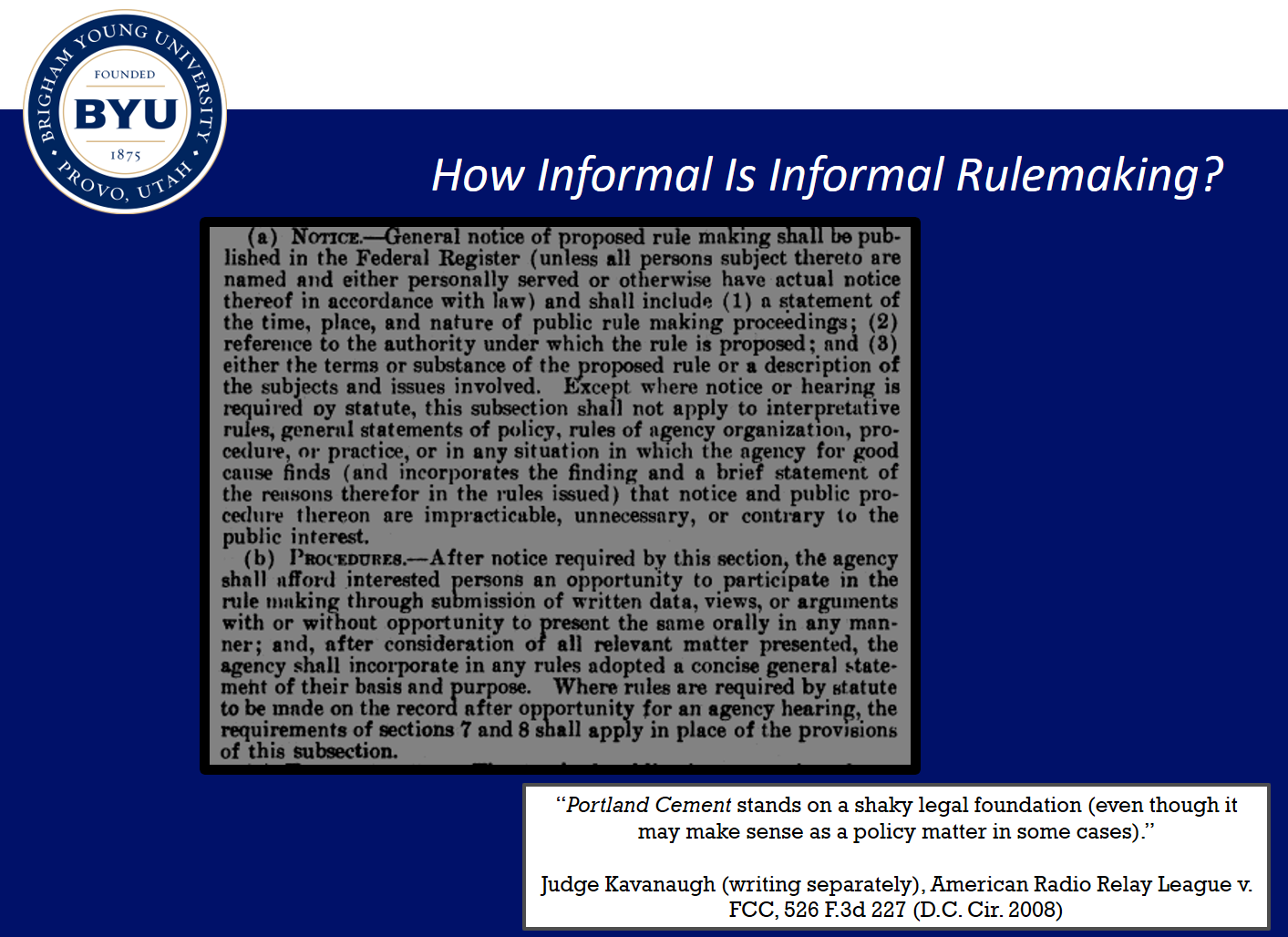
A structural reading of the APA’s arbitrary-and-capricious standard mixed with the requirement to solicit comments, for instance, very well result in the “material comments” doctrine and the “logical outgrowth doctrine.” Principles of constitutional avoidance may also contribute to hard look review. And so on. My point here isn’t to delve into those complicated legal questions (though I will say, as a policy matter, that I think these developments are positive). Rather, more modestly, I’m just observing that things have become more complicated. Likewise, as Chris Walker observed during today’s summit, informal rulemaking was largely an afterthought when the APA was enacted, whereas now, it is anything but.
Finally, consider the informal adjudication, which also has become more complicated:
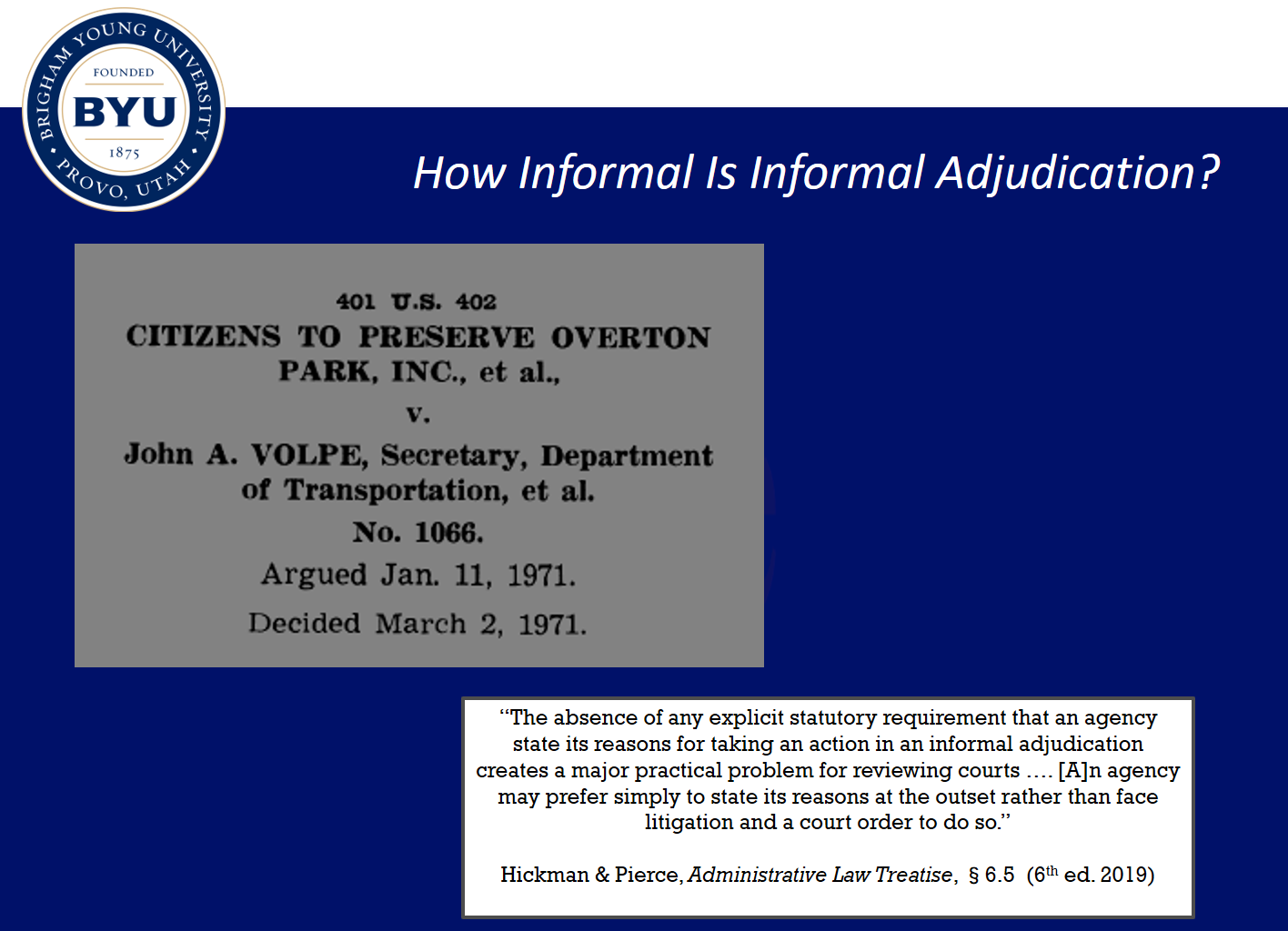
Hence, here is 73 Years of APA evolution in one chart:

(Why the different colors for ultra vires review in the informal boxes? Legal deference may be different depending on which box you are in. I should have marked formal adjudication’s ultra vires with the same color as informal rulemaking’s.)
What are the takeaways from this chart? One, the APA is showing its age. The way things work doesn’t match the statue especially well. And two, the APA’s formal procedures are much less important now. For what it is worth, I have recommended elsewhere that perhaps we should experiment with formal procedures to see whether they make sense.
###
The D.C. Circuit decided three opinions this week — and decided to rehear en banc Allegheny Defense Project v. FERC (more on that will be forthcoming on Notice & Comment).
In Ipsen Biopharmaceuticals, Inc v. Azar, the Court addressed a key part of the APA: What counts as “final agency action”? Here is how the opinion begins:
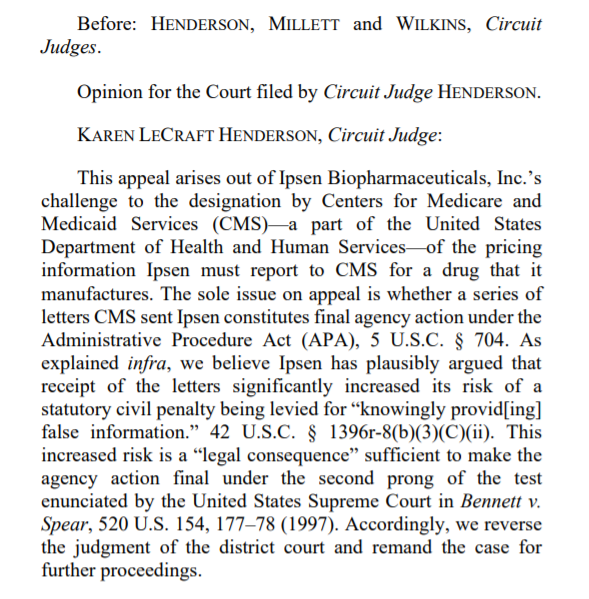
If you are an “admin law” person (and you surely are, if you are still reading this post by this point), you definitely need to read Ipsen Biopharmaceuticals. I suspect it will be cited in the D.C. Circuit — and probably elsewhere too — a lot. So read it!
Khine v. Department of Homeland Security is about the Freedom of Information Act, which was not part of the original APA. Here is how Judge Pillard, joined by Judges Srinivasan and Millett, opened her opinion:
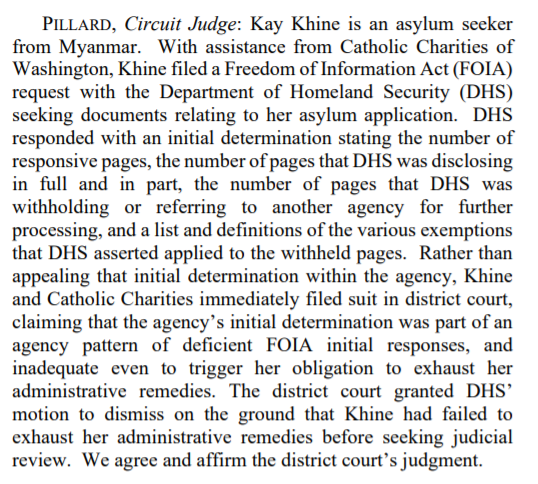
I confess, I’m not a FOIA expert. But this opinion strikes me as important, especially if you follow FOIA exhaustion principles.
Finally, we have National Treasury Employees Union v. FLRA. Here is the summary:
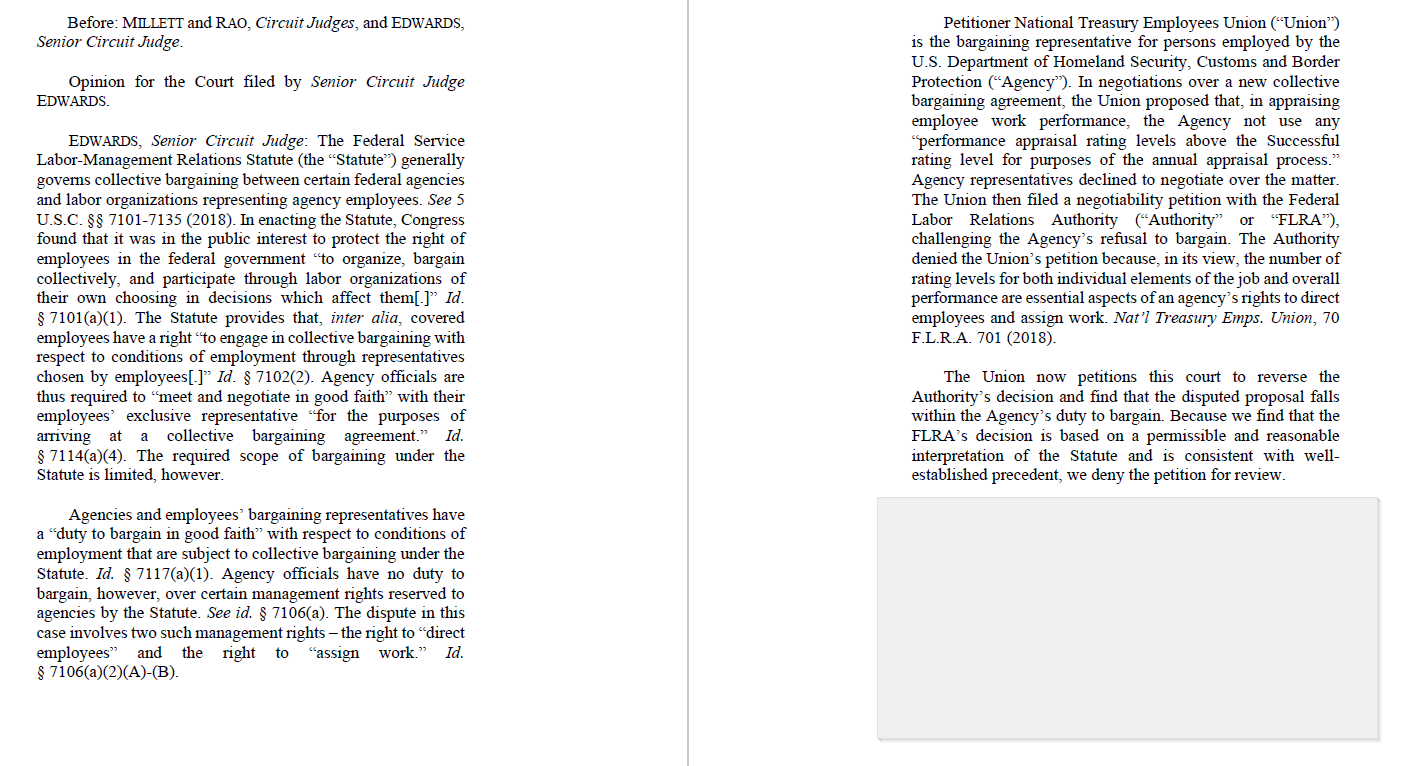
Each time I read a D.C. Circuit case, I learn something new.
* This is a simplification.
D.C. Circuit Review – Reviewed is designed to help you keep track of the nation’s “second most important court” in just five minutes a week.



